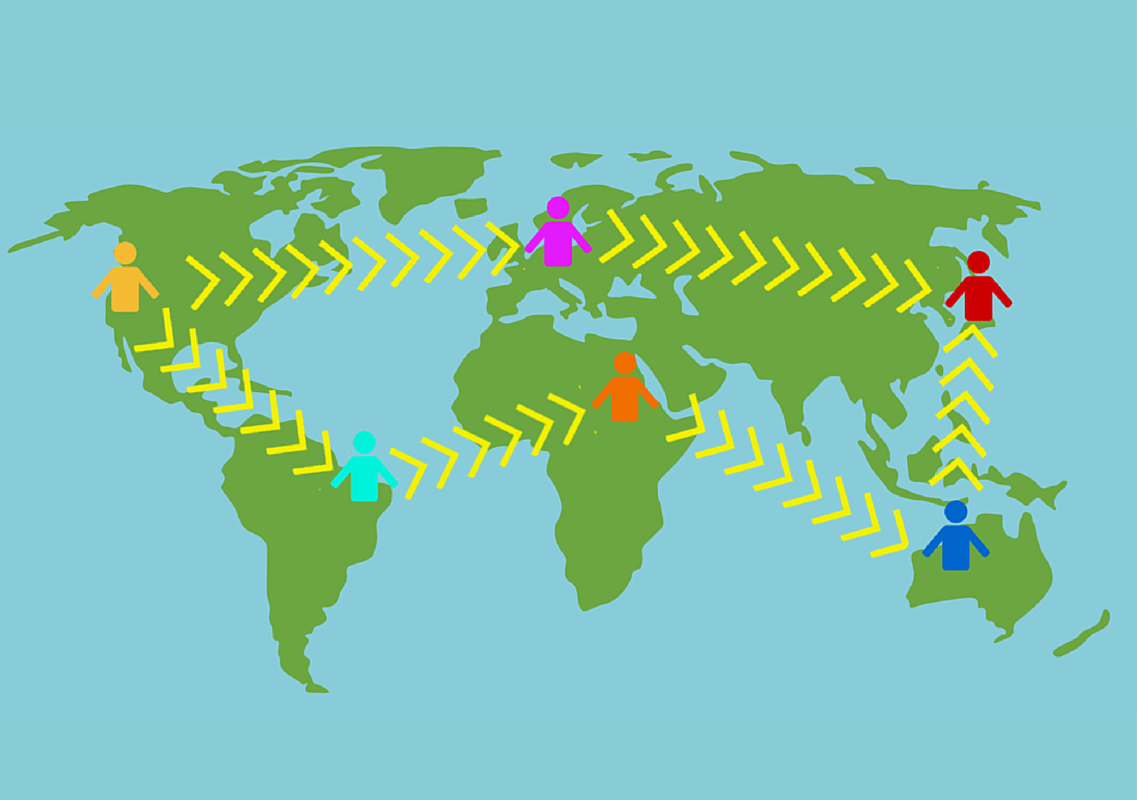Since Day 1, our company has operated as a distributed team. When Mike and I first launched Tribe Interactive, building our company as a distributed team wasn’t really a conscious business decisions so much as it was out of necessity. At the time, Mike was living in the Bay Area and I was down in San Diego. Neither of us was in a position to relocate, so we were forced to get our business off the ground from remote locations.
Today, Tribe is a 100% distributed team with people located in the United States, Costa Rica, the UK, and Japan. We have no centralized office location, and although that may change one day, working as a distributed team will always remain a core part of how our company operates.
The are tons of wonderful benefits to working as a distributed team. But it’s also not without its drawbacks. For us, the issues we face as a distributed team tend to fall within one of three categories: communication, organization, and culture. Below we’ll discuss these problem areas a bit more, and also talk about how we try to resolve these issues within our own team.
1. Communication
10 years ago, corporate communication revolved around 3 primary mediums: phones, fax machines, and in-person meetings. To be totally honest, I have no clue how to use a fax machine. I’m guessing folks younger than I am who are entering the workforce might not even know what one is. The other two communication channels – phones and face-to-face – are still extremely important parts of doing business and aren’t going anywhere.
The problem with phone calls and fact-to-face meetings, however, is that they can be huge time-sucks. They also aren’t conducive when you’re trying to create a productive remote working environment. So, how do we solve the communication issue as a distributed team without relying on phone calls and in-person meetings?
Since we still think face time is important, we have a weekly Skype meeting with all team members to talk about current projects, roadblocks, and anything else that comes up in conversation. It’s also a great way to build some rapport with our coworkers who may be thousands of miles away. Occasionally, we have non-video conference calls, although we try to keep these to a minimum. We use UberConference for these instances, and it works amazing!
Outside of video and conference calls, we use chat as our primary, day-to-day means of internal communication. It’s quick, easy, and less of a distraction than someone calling you or tapping you on the shoulder while you’re trying to work. Our chat tool of choice is Slack, which has essentially become our “office.” We use Slack to talk about projects, share documents, tell jokes, and post cat videos. You know, the importance stuff.
Slack integrates with other platforms and software that we use everyday: Google Drive, Stripe, Dropbox, and Zendesk, to name just a few. It also integrates really well with Asana, which is our primary task management and organization tool.
2. Organization
Tribe is a small team of talented folks who bring a bunch of different skills to the table. We seek out individuals who have a broad range of knowledge, and encourage team members to contribute in any area they feel they can make an impact, even if that’s outside of their area of expertise.
Sometimes, however, this can lead to confusion over who is doing what, who is leading a project, and who is ultimately responsible for completing certain tasks. Enter Asana. As mentioned above, we use Asana as our task management platform. You can add up to 15 team members for free, assign tasks, organize tasks by projects, and send messages to both team members and clients directly within Asana’s dashboard.
Asana helps keep us organized, on-track, and updated on what has been completed, what is still outstanding, and who is slated to do it.
3. Culture
As most people with experience managing remote workers will tell you, developing and maintaining a strong company culture is one of the toughest things about being a distributed team. And unlike communication and organization issues, there isn’t really a tool or software out there that can help inject a sense of culture into your company. So what do we do?
- We Share – Family photos, pictures from our vacations, inspirational quotes, articles we find interesting, funny videos, anything and everything that helps to create relationships among team members is encouraged. The more we share non-work related things with each other, the more we learn about our team.
- We Help – While certain team members have specific responsibilities, it’s very rare that we have a ‘siloed’ project that doesn’t spill into other service areas in one way or another. Since we look for people who have diverse skills-sets, we rarely have issues with the ‘that’s not my job’ mentality. Getting things done and providing clients with the best experience possible is everyone’s job, regardless of job roles or titles.
- We Travel – We make it a point to meet up with our team members once a year to work, play, and team-build. We got this idea from the folks at Buffer, who are setting the standard when it comes to being an effective distributed team. While we aren’t able to make 3 international trips a year just yet, we are working toward the goal of having more in-person team retreats to help us grow Tribe’s company culture.
How do you keep things running smoothly with your distributed team members? Leave a comment and let us know!

Comments are closed.